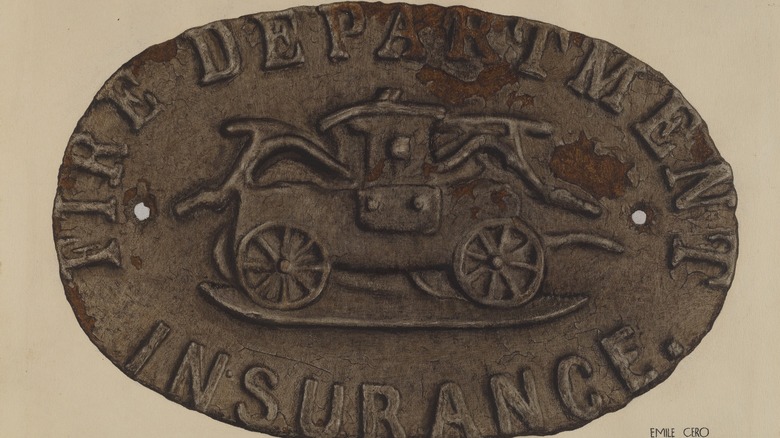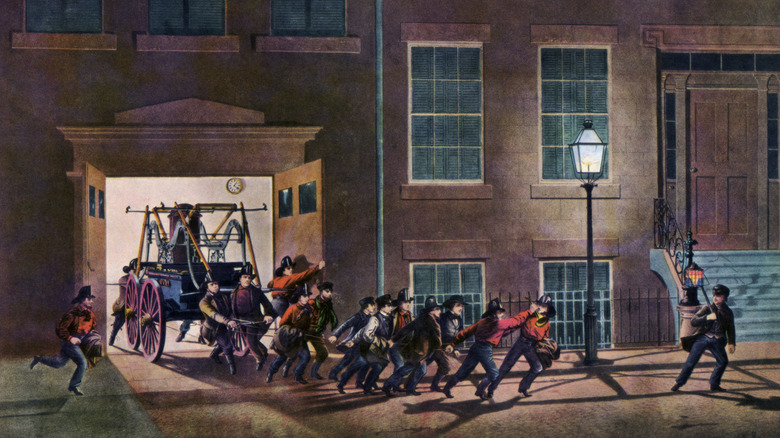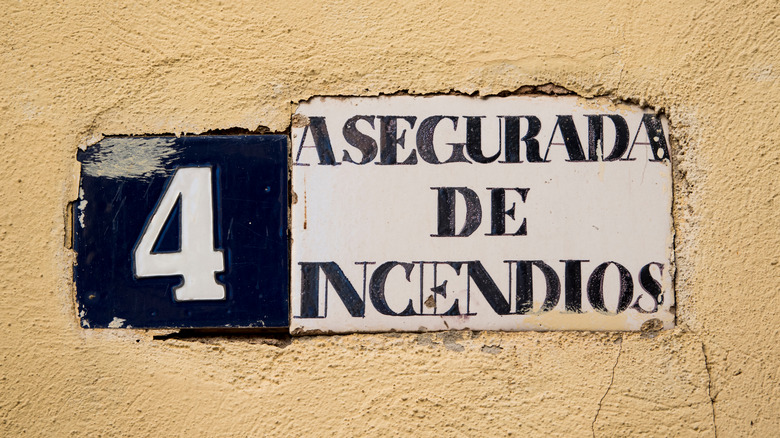What It Means If You See A Metal Plaque Above A Historic Home's Front Door
Whether it's bizarre features in an old home or a metal symbol on a brick house, many historic homes have all sorts of unusual designs that don't make much sense to us today. One of these oddities appears on homes dating from the late 17th to the early 19th century, which are sometimes decorated with an unusual metal plate directly above their front doors. But, perhaps surprisingly, such plates don't have anything to do with the addresses of the houses. Made from zinc, tin, brass, iron, or ceramic, they were usually imprinted with a logo, symbol, or emblem. Though their significance has become a bit clouded over time, the answer to what they mean lies in history.
If you see one of these plaques above a historic home's front door, you're most likely looking at a fire mark. Also called badges or house plates, fire marks were given out by insurance companies to homeowners to indicate that the property was insured for fire. Often the symbols and dates on the plaques referred to a particular company and sometimes even the policy number itself. Think of it as an early sort of advertisement.
Fire marks are part of a long history
The Hall of Flame, the museum of the nonprofit National Historical Fire Foundation located in Phoenix, indicates that after the Great Fire of London in 1666, insurance companies organized their own private fire companies. Clients kept a fire mark on their homes or businesses to prove they were insured and worth the attention of the private firefighting company. While insurance companies in America weren't created until after volunteer firefighters were already a prominent part of local society, there are still myths that private fire companies wouldn't fight a fire unless the building was marked. While untrue in the United States, British firemen did follow this tradition.
However, when most of a city's buildings are made of wood, fire is a huge potential hazard. By the 18th century, insurance company firefighters responded to burning buildings whether they were insured or not for fear that the fire would spread. Dozens of countries followed, adding fire marks to structures well into the 20th century and creating hundreds of colorful plaques made from tin or lead. Eventually, hundreds of now-historical buildings carried a fire mark, and many may still have one of these plaques near their main entrances.
Fire marks are still valued today
These days, of course, the need for a fire mark is well in the past since most homes and businesses have insurance. Additionally, private fire companies have been replaced by municipal fire departments, although many rural areas still have volunteer fire companies. Fire marks are still valued today as tokens of early advertising and bygone insurance policies. This ongoing value has inspired hobbyists to collect house plates so much so that there's a market dedicated to creating reproductions.
If you're lucky enough to have a fire mark on your house, the organization that probably has the most information about this unique historic trend is the Fire Mark Circle of the Americas, founded over 40 years ago by collectors and enthusiasts. You can see examples of early fire marks at The Fireman's Hall Museum, based in Philadelphia. The Hall of Flame also has a collection of about 400 fire marks on display. If you're renovating a historic house, consider keeping its fire mark right where it is or make it a centerpiece of a new antique home decor collection to commemorate the rich, full history of fire marks.


